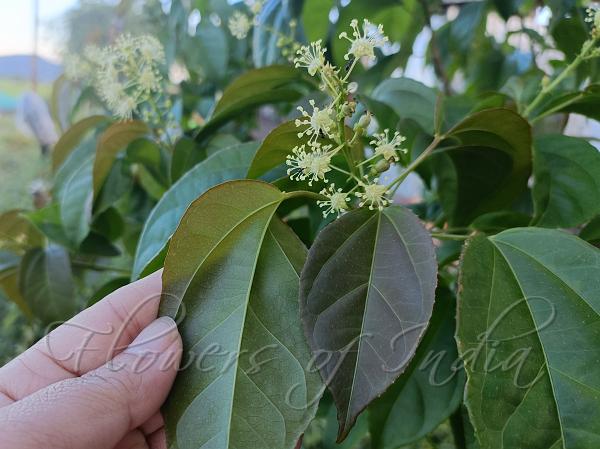|
| Purging Croton |
|

|

| File size | 731988 |
| Original date | 8/6/22 5:34 PM |
| Resolution | 9248 x 6936 |
| Flash | Flash did not fire, auto |
| Focal length | 4.73mm |
| Exposure time | 1/50s |
| Aperture | 1.7 |
| Focus Distance | |
| Metering Mode | Center weighted average |
| Camera make | OnePlus |
| Camera model | OnePlus Nord CE 2 |
| Sensor type | Undefined |
|
|
|
|
Photo: |
Botanical name: Croton tiglium Family: Euphorbiaceae (Castor family)
Synonyms: Croton himalaicus, Croton officinalis, Croton jamalgota, Croton birmanicus
Synonyms: Croton himalaicus, Croton officinalis, Croton jamalgota, Croton birmanicus
Purging Croton is a treelet up to 7 m tall, with young
branches green, sparsely star-shaped-hairy, hairless at maturity.
Stipules are subulate, 1.5-4 mm, falling off; leaf-stalk 2.5-6 cm,
nearly hairless; leaf blade ovate, ovate-elliptic, or
ovate-lanceshaped, 5-15 x 2-7 cm, papery, hairless or becoming
hairless, yellowish to brownish when dry, base wedge-shaped or broadly
so, rounded, rarely slightly heart-shaped, with discoid glands, margins
minutely toothed or nearly entire, tip pointed or tapering, sometimes
long tapering or with a tail; basal veins 3, lateral veins 3 or 4.
Flowers are borne in racemes at branch-ends, 8-20 cm; bracts subulate,
about 2 mm. Male flowers buds are nearly spherical. Female flowers have
sepals oblong-lanceshaped, about 2.5 mm, becoming hairless; styles
bipartite. Fruit is ellipsoidal, oblong-ovoid, or nearly spherical, 1-2
x 1-2 cm, sparsely star-shaped-hairy or becoming hairless. Seeds are
elliptic or oblong-ovate, 8-12 x 6-7 mm, gray-brown. Purging Croton is
found in East Himalaya, India and SE Asia. Flowering: January-July.
Medicinal uses: The seed oil contains crotin,
tiglic and crotonic acid, and crotonoside, and is very poisonous, being
a drastic purgative and often causing pustular eruptions on the skin.
The seeds are used to stupefy fish. The root and leaves are used as an
external medicine for rheumatalgia and also as an insecticide.
The seed oil contains crotin,
tiglic and crotonic acid, and crotonoside, and is very poisonous, being
a drastic purgative and often causing pustular eruptions on the skin.
The seeds are used to stupefy fish. The root and leaves are used as an
external medicine for rheumatalgia and also as an insecticide.
Medicinal uses:
 The seed oil contains crotin,
tiglic and crotonic acid, and crotonoside, and is very poisonous, being
a drastic purgative and often causing pustular eruptions on the skin.
The seeds are used to stupefy fish. The root and leaves are used as an
external medicine for rheumatalgia and also as an insecticide.
The seed oil contains crotin,
tiglic and crotonic acid, and crotonoside, and is very poisonous, being
a drastic purgative and often causing pustular eruptions on the skin.
The seeds are used to stupefy fish. The root and leaves are used as an
external medicine for rheumatalgia and also as an insecticide. | Identification credit: Tabish | Photographed in Imphal, Manipur. |
• Is this flower misidentified? If yes,